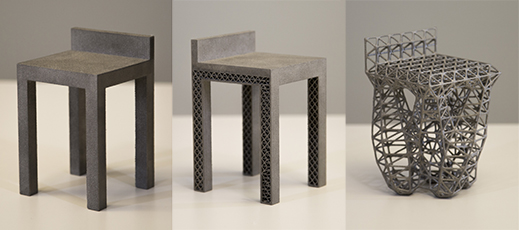
Let’s be honest, start to mention machines and computer programs that start to think, learn or evolve, and most people scoff. One or two at the back might start gently shaking, words like ‘Skynet’, ‘Cyberdyne’ or even ‘Agent Smith’ beginning to flutter uncontrollably through their paranoid minds.
However, the developers at Autodesk don’t seem to fall into either group and so have spent the past seven years working on a new dimension to their CAD software, called Dreamcatcher. The San Rafael-based design software giant is already responsible for most of the world’s architectural and engineering inclined population’s current interaction with 3D software, with its tools being used everywhere, from the redesign of the Panama canal, to the vividly lifelike animation in anyone of Pixar’s latest blockbusters. And now this new feature adds another innovative process that Autodesk called ‘generative design’, which uses clever algorithms to try and mimic the process of natural evolution.
Put simply, the user feeds his designs into the program, outlines the problem he’s trying to solve, sets down any particular parameters that need to be factored in, and Dreamcatcher offers a set of potential solutions. Only it doesn’t stop there. The user identifies which solutions are practicable, from which Dreamcatcher then breeds a new set of solutions by combining the workable ideas, and adding an x-factor. Plus it can continue to do this, producing generation after generation of new designs, until there are thousands to choose from. The good ideas are kept and the duffers rejected. Talk about (un)natural selection.
Because Dreamcatcher has no preconceived notions, extreme evolution can sometimes take place, which can often be the answer. Say the user asks for a chair, feeds in dimensions, materials, cost constraints, and so on, Dreamcatcher is just as likely to evolve the design into a seat with four legs of interwoven scaffolding over the usual solid ones, or five legs, or whatever it thinks the user might like.
While generative design has been around for some time, it has mostly been used by animators and game developers to come up with newer and shinier effects for their products when the human brain can’t possibly envision what yet another laser beam or explosion can look like, the emerging growth of 3D printing is likely to bring it to more mainstream attention.
When designing a new swing-arm – that’s the suspended bit of chassis that attaches a motorcycle rear wheel to the rest of the frame – Lightning Motorcycles of San Carlos needed an out-of-the-box design for its new LS-218 electric superbike that could cope with the enormous stress the part would be put under thanks to the bike’s ferocious horsepower, when compared with the petrol bikes on the market. Dreamcatcher was given the designs of current cutting-edge swing-arms, tire width, required clearances, materials available, average rider weight, and anything else the designers could think of. Instead of the standard alloy box-section design that most bikes use, it created a system of intersecting triangles sheathed in carbon fibre that no one has ever tried before.
Besides this, Dreamcatcher has only been used in a very few other applications to date, including a bracket for the Moon Express lunar lander, But Autodesk hopes that more industries will adopt generative software, as it becomes more commercialised.
